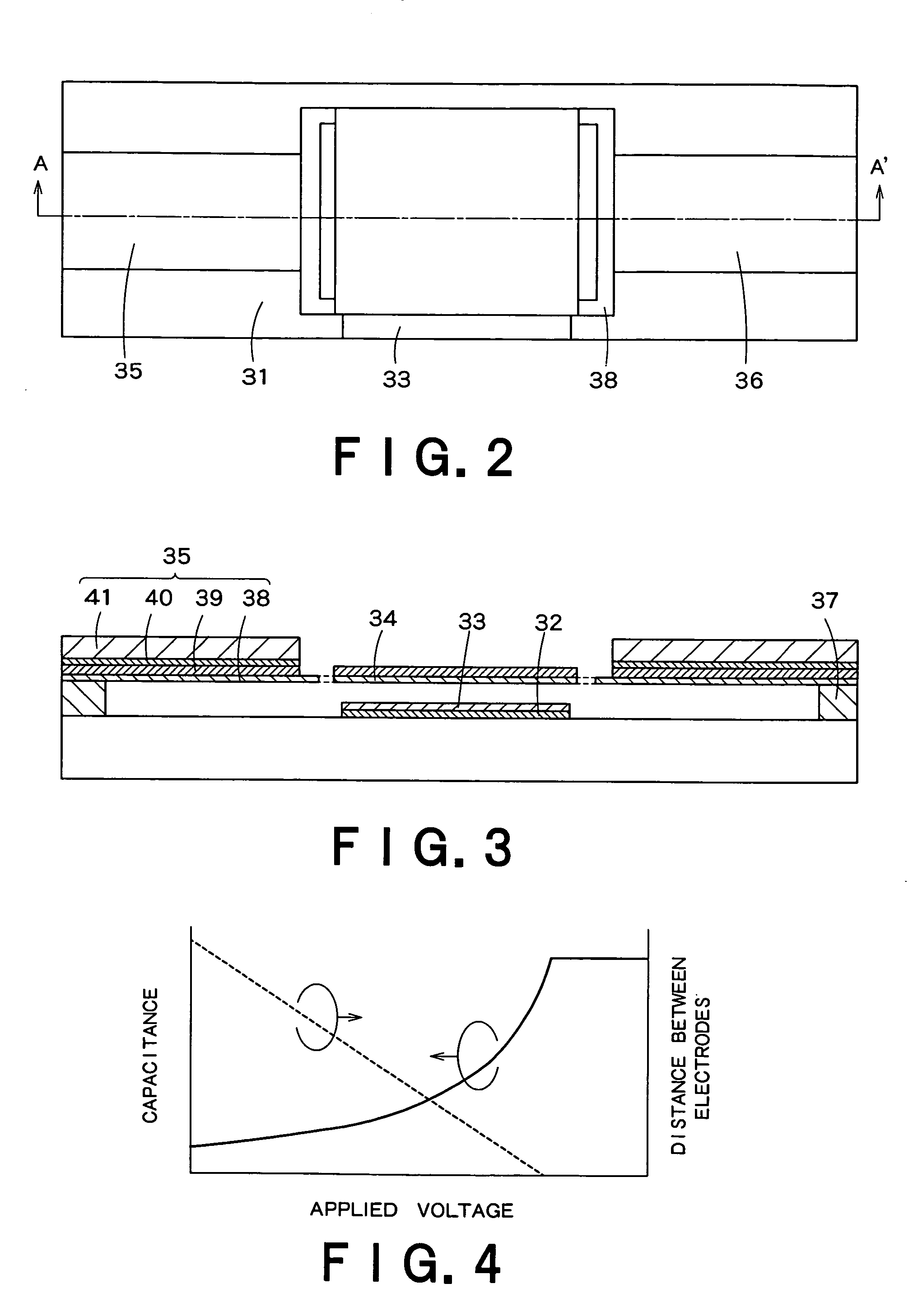Tunable filter and portable telephone
a filter and portable technology, applied in the field of tunable filters, can solve the problems of low q, inability to obtain large variable inductance, and inability to achieve large dielectric losses of ferroelectric substances, and achieve excellent reliability and reproducibility, and small insertion loss
- Summary
- Abstract
- Description
- Claims
- Application Information
AI Technical Summary
Benefits of technology
Problems solved by technology
Method used
Image
Examples
first embodiment
(First Embodiment)
[0060]FIG. 1 is an equivalent circuit diagram of a tunable filter according to a first embodiment of the present invention. The tunable filter shown in FIG. 1 includes a filter main body 11, and a control circuit 12 that controls the filter main body 11.
[0061]The filter main body 11 is a ladder filter including a series resonance unit 3 having two resonance units 1 and 2 connected in series, and parallel resonance units 4 and 5 that are connected to between one end of the resonance units 1 and 2, respectively and an input / output common terminal. Each of the resonance units 1, 2, 4, and 5 has a variable capacitor 7 and a thin-film piezoelectric resonator, i.e., a film bulk acoustic resonator (FBAR) 8 that are connected in parallel, and a variable capacitor 9 that is connected in series with them. An upper electrode of the film bulk acoustic resonator 8 within the series resonance unit 3 and an upper electrode of the film bulk acoustic resonator 8 within the parallel...
second embodiment
(Second Embodiment)
[0084]A tunable filter according to a second embodiment is the same as that according to the first embodiment, except the circuit configuration of the filter main body 11 is different. Therefore, the difference is mainly explained hereinafter.
[0085]FIG. 10 is a circuit diagram of the filter main body 11 according to the second embodiment. The filter main body 11 shown in FIG. 10 includes two capacitors 71 and 72 that are connected in series, and a parallel resonance unit 75 having two resonance units 73 and 74 connected to between one end of the capacitors 71 and 72, respectively and an input / output common terminal. Each of the resonance units 73 and 74 has the film bulk acoustic resonator 8 and the variable capacitor 7 that are connected in parallel, and the variable capacitor 9 that is connected in series with them, like the resonator shown in FIG. 1. The number of resonators that constitute the parallel resonance unit 6 is not particularly limited to two.
[0086]...
third embodiment
(Third Embodiment)
[0089]A tunable filter according to a third embodiment is the same as that according to the first embodiment, except the circuit configuration of the filter main body 11 is different. Therefore, the difference is mainly explained.
[0090]FIG. 12 is a circuit diagram of the filter main body 11 according to the third embodiment. The filter main body 11 shown in FIG. 12 has a lattice filter configured by four resonators 76 connected in a bridge. Each resonance unit 76 has the film bulk acoustic resonator 8 and the variable capacitor 7 that are connected in parallel, and the variable capacitor 9 that is connected in series with them, like the resonator shown in FIG. 1.
[0091]Among the four resonators 76 shown in FIG. 12, the film bulk acoustic resonators 8 included in the two resonators on one diagonal line and the film bulk acoustic resonators 8 included in the two resonators on the other diagonal line have mutually different thicknesses in their upper electrodes 55. The...
PUM
 Login to View More
Login to View More Abstract
Description
Claims
Application Information
 Login to View More
Login to View More - R&D
- Intellectual Property
- Life Sciences
- Materials
- Tech Scout
- Unparalleled Data Quality
- Higher Quality Content
- 60% Fewer Hallucinations
Browse by: Latest US Patents, China's latest patents, Technical Efficacy Thesaurus, Application Domain, Technology Topic, Popular Technical Reports.
© 2025 PatSnap. All rights reserved.Legal|Privacy policy|Modern Slavery Act Transparency Statement|Sitemap|About US| Contact US: help@patsnap.com



